The Playstation emerged triumphant, boasting a wealth of games and a control pad that actually fitted in your hands rather than feeling like you playing on your console using a shoe.
With my package I received a demo disc ‘d1 version’ and a copy of Wipeout 2097. Combined with several PS1 magazine issues which contained demo discs, I had a fair few hours of playing time to enjoy. There is nothing like opening a new box of hardware from a games console manufacturer…the look, the feel and the smell of everything new inside all of the fiddley wrapping, who knows, this could be better than your cat.
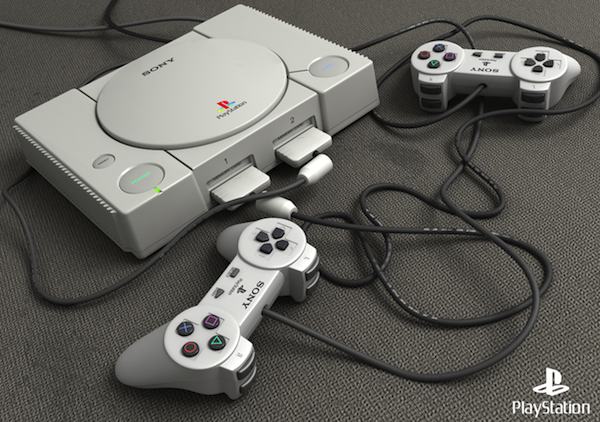
The Sony demo disc not only had several games to play on but also some tech demos from Sony that really were jaw dropping at the time. Many of you will remember the T-Rex that walked onto screen which you could control with your pad. It was really impressive to see first hand, the leap from the 16 to 32bit hardware. I think, unfortunately, the first time we actually saw a T-rex in a published game for the PS1 was in Tomb Raider but it didn’t look quite as polished as the d1 demo version but more like something your nephew put together using dry pasta and glue.

Wipeout 2097 was a ground breaking and very addictive title for the PS1, it was a must have game for the Playstation. The first thing to notice when I popped the disc in and setup the game through the menus, was the music. Real, stereo, music!


The game was set in the future (according to the title ‘Wipeout 2097’ it was set in the year 2097). You compete for money in a dangerous race using vehicles, powered by some kind of free energy which enabled your craft to hover above the ground. Using a combination of thrust and directional air braking, you guided yourself in between the track walls to the unmistakable sounds of The Prodigy, Underworld, Daft Punk and Orbital. Throughout the race you were able to pick up ‘power ups’ to use, including missiles, bombs, shields and speed boosts to ensure yourself the win. With the option to race split screen the game was a massive hit and really put together what Sony were out to achieve. A multi media, powerful entertainment system that was not just a flash in the pan.
Some gameplay with Prodigy soundtrack
The game that got me totally hooked on this console was Need For Speed. A game released only for PC, 3DO and PS1 when launched, little did anyone know how big this series was going to be. In recent times the games design has been altered to cater for a wider audience, compared with the early, quite serious take on road racing.
NFS has been tossed like a Spaniard in a bull ring around several studios in its time, sometimes hitting the mark and other times it…well…just hasn’t.

The first NFS was something of a landmark in racing games for the gaming community, first released on the Panasonic 3DO, the hardware’s exoticism matched the exclusiveness of the software. It had a certain mature quality that made you think you were experiencing something quite premium, like eating Ferrero Rocher on a jet plane, or wiping your arse with a tenner.
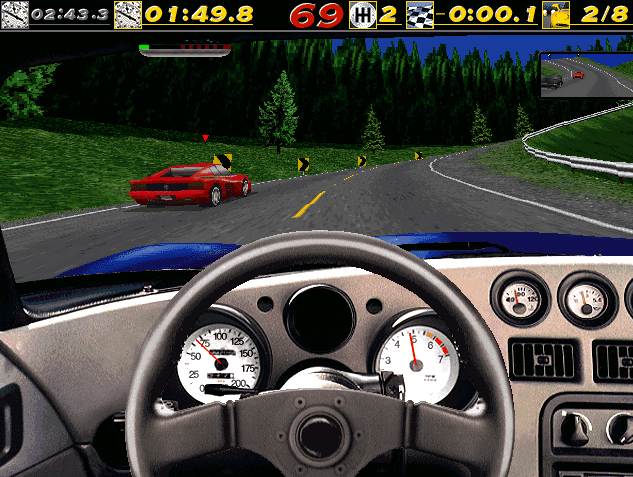
All of the cars included in the game had full specifications, listed and narrated by one of the team at Road & Track, who have been helping out games designers in racing games for many years.
You could view videos of each of the cars each with their own incredibly soft rock track over the top. The kind of rock you’d hear over the final action sequence in Saved By The Bell, in an episode where Zack Morris finds a passion for amateur basketball and is aided by his friends in defeating his confidence gremlins, with provocative suggestions from females and high fives from the guys. The climax of the show would be the failed look upon the opponents faces after the final shot from Zack and the look of approval and admiration from Mr Belding, who previously thought Basketball was not to be taken as seriously as one of the more academic studies that semester.
Watch a Need for Speed video from the 90’s!

It was the first time I had been impressed by the attention to detail of the cars and the way they handled in the game. The Canadian based company ‘Distinctive Software’, which became known as ‘EA Canada’ really went to town with the detail which has been seen in the entire series. As well as a solid choice of vehicles in the game, gamers were also treated to an impressive cockpit view of the car, detailing all of the real world dials and gauges, this was somewhat revolutionary when put against other racing titles at the time, including ‘Distinctive Software’s’ Test Drive and Test Drive II.
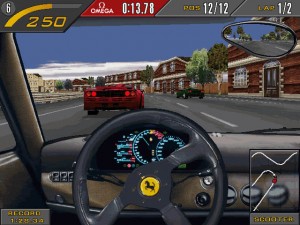
I’ve always been of the opinion that Need For Speed’s attention to detail and the track design has been something really worth mentioning right from the get go. The first game treated you to some great open roads, the point to point races were defiantly a highlight in the game, a step away from the usual perfecting of lap times on a track you were made to do in other racing titles, like the rather clinical Gran Turismo series. Alpine courses, coastal runs and city freeways kept things interesting as well as good-looking.
It was nice just to be able to take one of the exotic cars out for a razz on the open roads, hand brake turning every now and then, infuriating the local police force. NFS currently sits top dog as cop-chase-racer, in its humble beginnings cops were present but not the main focus of the game, perhaps it was just a simple reminder that in real life, if you found yourself travelling at 180mph through an Alpine road in your Lamborghini, you could wind up with a ticket.
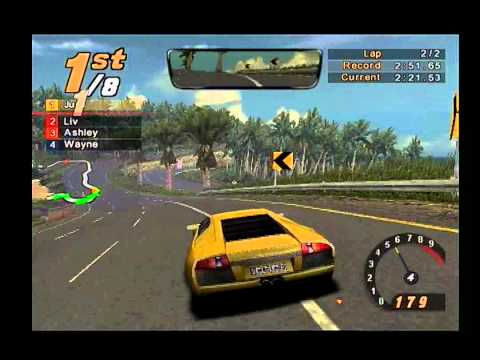
As well as visually pleasing the NFS series also set the standard for in-game audio. Occasionally I’d find myself causally driving along the roads looking for viewpoints and locations listening to the environmental sounds of birds, planes, trains, rivers and tractors…all of which were in the game but usually overlooked due to the fact you’d be passing these locations at breakneck speed.
You could tell, as a keen car enthusiast, that time had been taken to digitally reproduce the real sounds of each of the cars, down to the clunk of the gear change in the inside view. From the deep growl of the Dodge Vipers V10, to the high-end buzz of the Ferrari Testarossa it was all part of the series strong points which are still seen very much today.
In my opinion Need for Speed II (1997) has been one of the best in the series. Again, track design was superb, it wiped the floor with Nintendo’s N64 titles at the time, it was slicker than the Test Drive title at the time and more fun than Tokyo Highway battle (a personal favourite of mine).

The car selection was definatly aimed at the enthusiast. The featured eight supercars: the Ferrari F50, Lotus GT1, Jaguar XJ220, Ford GT90, Lotus Esprit V8, McLarren F1, Italdesign Cala, and the Isdera Commendatore 112I. And tracks were set in locations such as Canada, Norway, Australia, Northern Europe, and Nepal.
If and when you become bored with the myriad of supercars and exotic locations, there were some inbuilt cheat codes in the game which allowed you to drive any of the civilian vehicles (and some scenery props) you see during the races. Much fun was had chasing a friend in a school bus whilst he tried desperately to outrun you in a Citron 2CV along a narrow mountain pass. Or go all out and unlock the large green T-rex and the wooden outhouse. What other racing game provided you with an opportunity to overtake a dinosaur with a fucking toilet? Stick that in your Gran Turismo pipe and smoke it.
Need for Speed III ‘Hot Pursuit’ really was the full introduction of cat and mouse, cop VS racer hot pursuit. The graphics had been pushed to the limit on the 32 bit machines, the car selection was as exclusive as ever but this time you could take the role as the cop. The hot pursuit mode included many things that you will recognise in today’s NFS. Cops had to slow or stop racers along the several miles of road, using spike strips or road blocks where available.

The music was as solid as always within this series, you could choose from rock or techno as your preferred genre to race to. The tracks were composed and produced mainly by Saki Kaskas, exclusively for need for speed (NFS 1-5). EA had opted to use these tracks instead of using a collection of commercial tracks, as each track was specifically designed for each race track, it really brought the whole racing experience to a new level. Furthermore they had improved on the interactive music from Need For Speed II…the music would break down during a crash, change pace when in the lead, or if you were lagging behind.
One final video from the Speed Series…
http://www.youtube.com/watch?v=97VG1r9LLH8
The PlayStation was really living up to its hype and was without doubt ‘Next gen’ gaming. If the initial innovative releases weren’t enough, one virtual woman gave gamers two big reasons for paying more attention to Sony’s fun box. Lara Croft, a household name today and since being played by brown baby snatcher, Angelina Jolie…Lara has gained herself international recognition.

Armed with gun holsters/suspenders, short shorts, army boots and a blue skin-tight top, the initial art work and advertising had young gamers by their little hairless balls. This title, as well as the varied mix of new game concepts, also captivated an older audience who saw that shit had just got serious in the design and attention to detail of the games on this platform.
Lara Croft as far as I could tell, is an intelligent, British born woman who’s parents sadly had passed away in a tragic accident, leaving her a huge mansion, one outfit and a butler. She has an assault course in her garden that you could mess about on to hone your skills for when you were out adventuring.
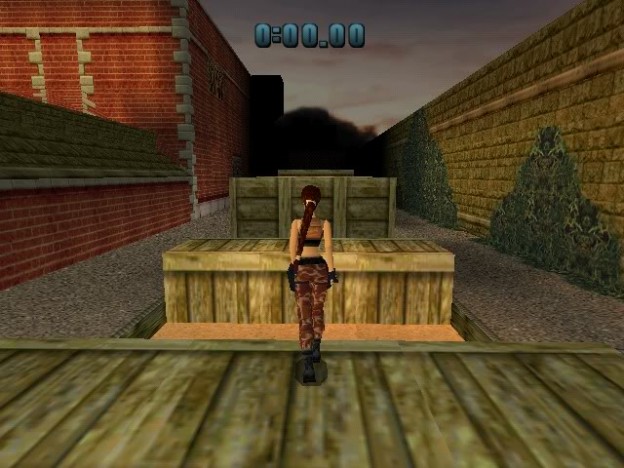
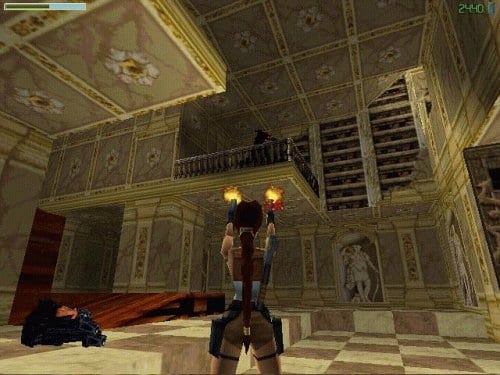
The camera was situated behind Lara and intelligent enough that it was possible to look over her shoulder when needed. She could run, jump, grab, shimmy, dive and crawl. You would need all of these skills for when exploring caves and buildings, occasionally avoiding booby traps and enemies. To everyone’s surprise the game wasn’t just a pair of tits, it played very well and being able to jump whilst shooting henchmen and wolves in the face was something we had not seen before. The game was a nice mix of puzzles, shooting and survival with a story line that was quite original. Lara’s looks, coupled with her dry wit and gun play was an instant classic, there have been a number of releases since that time, some of which haven’t matched the subtle qualities of the original.

So with its powerful bespoke hardware on board, including the successful MIPS R3000A 32bit chip and the capability of running CD ROMs, the output of 360,000 polygons a second and 180,000 texture mapped and light-sourced polygons per second, kicked out impressive visuals and sound. Granted, now we look back at the triangular wobbly polygon worlds of the PlayStation and wonder how our eyes coped with it. I’ve played an early Ridge Racer game recently and aside from the dire sound effects of engines and tyre screeching, the track looked like I had poured myself a pre race cup of magic mushrooms and all the colours were trying to kill me.
Again with each and every console that has been released, there are always the instant classics and the birth of new ideas and game series.
Here is Angelina Jolie, summing up everything about Tomb Raider. Tune: Fluke – Atom Bomb
